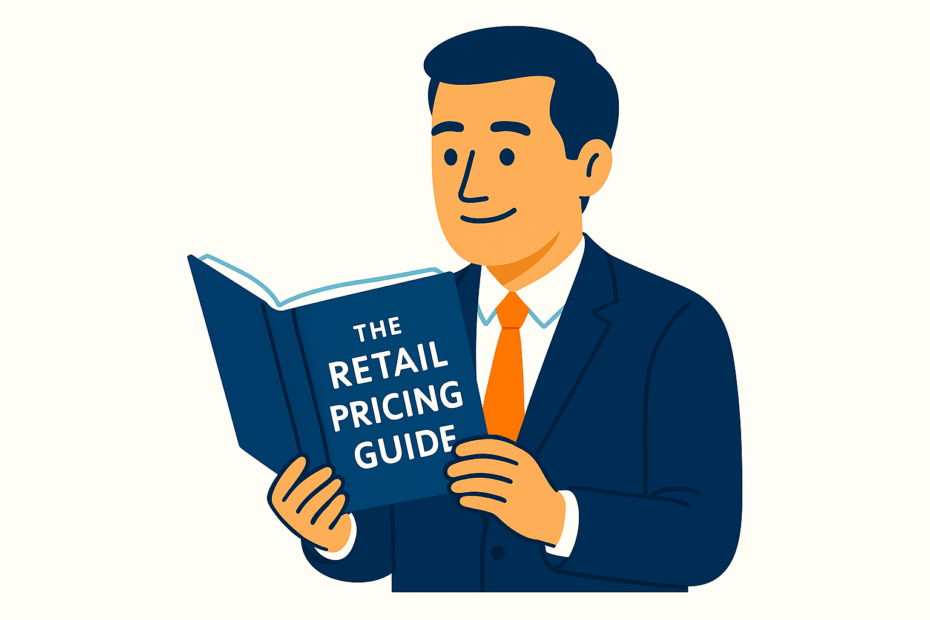Pricing is no longer a static decision. It changes daily, sometimes hourly, and it shapes how customers see your brand more than any marketing campaign ever could. For retailers, competing on price has become a delicate balance between staying attractive to shoppers and protecting margins.
But competing on price is not the same as cutting prices. The smartest retailers know that success comes from understanding their market, their competitors, and their customers, then using that knowledge to make informed, strategic pricing decisions.
This quick guide explores what competing on price really means for retailers today, how competitor price monitoring supports that strategy, and how to build a pricing approach that drives profit rather than panic.
What Competing on Price Really Means for Retailers
For many retailers, competing on price brings to mind discount wars and constant price changes. In reality, it means something much more strategic. Competing on price for retailers is about finding the right position in the market, one that reinforces value, builds trust, and maintains profitability.
Customers do not always choose the lowest price. They choose the most convincing offer. That could mean reliability, service, convenience, or brand reputation. A retailer that understands its value proposition and aligns it with competitive pricing will attract loyal customers while avoiding unnecessary margin loss.
Competitor price monitoring is at the heart of this balance. It gives retailers visibility of where they stand in the market so they can make decisions based on facts rather than assumptions.
The Key Pillars of Price Competitiveness
Successful pricing strategies depend on more than numbers. They are built on principles that define how effectively retailers can compete on price.
- Visibility is the first pillar. Retailers cannot compete effectively if they cannot see the full picture. Competitive price monitoring provides that visibility by showing how competitors are positioning products, adjusting promotions, and responding to market conditions.
- Agility is equally important. Markets move quickly, and retailers must be able to act fast when opportunities arise or risks appear. Agility comes from having accurate, timely data and the tools to act on it immediately.
- Alignment ensures pricing decisions support broader goals. The most effective pricing strategies align with brand objectives, category priorities, and channel plans. This guarantees that every adjustment contributes to the wider commercial strategy.
- Perceived Value is another key factor. Price alone does not define value. Customers evaluate the total cost, including delivery, returns, convenience, and trust. Retailers that combine competitive pricing with a strong value message perform better over time.
- Data Confidence is what holds everything together. Even the most advanced strategy fails without reliable data. Inaccurate or incomplete information can lead to poor decisions and costly errors. Strong pricing operations depend on data that is validated, consistent, and easy to use.
How Retailers Use Competitive Price Monitoring to Win
The best-performing retailers use competitive price monitoring as a source of insight rather than simply a data feed. It helps them anticipate market changes, identify opportunities, and act with clarity.
Through consistent competitor price monitoring, retailers can track which products are being promoted, how prices are shifting, and how competitors respond to seasonal campaigns or new launches.
For instance, a retailer might see that a competitor has increased the price of a popular item due to low stock. Rather than following, they can hold price, increase visibility, and capture additional sales while maintaining margin.
Competitive price monitoring also supports better collaboration across pricing, category, and marketing teams. When everyone works from the same data, decision-making becomes faster, more confident, and more aligned.
Common Mistakes When Competing on Price
Retailers often fall into the trap of competing on price in the wrong way. The most common mistake is over-discounting. While short-term price drops can boost traffic, they can also damage brand perception and reduce profitability.
Data delays are another challenge. When teams rely on outdated or incomplete data, they react too slowly to market changes. By the time they respond, competitors may already have captured the opportunity.
Siloed systems can also cause issues. Pricing teams may have access to insights that others do not, which can lead to inconsistent strategies. Without integrated competitive price monitoring, different departments may make conflicting decisions.
The final pitfall is focusing on the wrong products. Competing on price does not mean lowering prices everywhere. Retailers need to know which products drive perception. Key value items shape how customers judge fairness and value, and targeting these items creates the biggest impact with the least risk to margin.
How Insitetrack Helps Retailers Compete on Price
- At InsiteTrack, we believe that effective pricing is built on clarity, confidence, and collaboration. Competing on price starts with having the right data, delivered in a way that supports how your teams already work.
- Our competitor price monitoring solutions provide retailers with complete visibility across marketplaces, categories, and regions. Every data point is validated and verified to ensure accuracy, giving teams confidence to act quickly and effectively.
- Flexibility is central to our approach. We know that every retailer operates differently, so our delivery adapts to each client’s workflow. Whether that means Power BI integration, detailed Excel reports, or custom data feeds, we fit into your systems rather than expecting you to fit ours.
- We also believe that partnership creates lasting value. Our experts work directly with pricing, category, and commercial teams to interpret data, identify trends, and refine strategies. By combining automation with human insight, we help retailers turn competitive price monitoring into measurable results.
Make Price Competition Work for You
Competing on price is not about lowering prices across the board. It is about using insight to make smarter, faster decisions. Retailers that combine strong competitor price monitoring with reliable data, flexible delivery, and cross-team collaboration consistently outperform those that rely on guesswork.
When teams can trust their data, they act decisively. They can align pricing with brand strategy, protect margin, and strengthen their position in the market.
At InsiteTrack, we help retailers do exactly that. We provide the visibility, precision, and partnership needed to compete on price with confidence.
Become More Competitive
Book a demo with our team and discover how accurate, validated insights and expert support can transform your pricing strategy.



